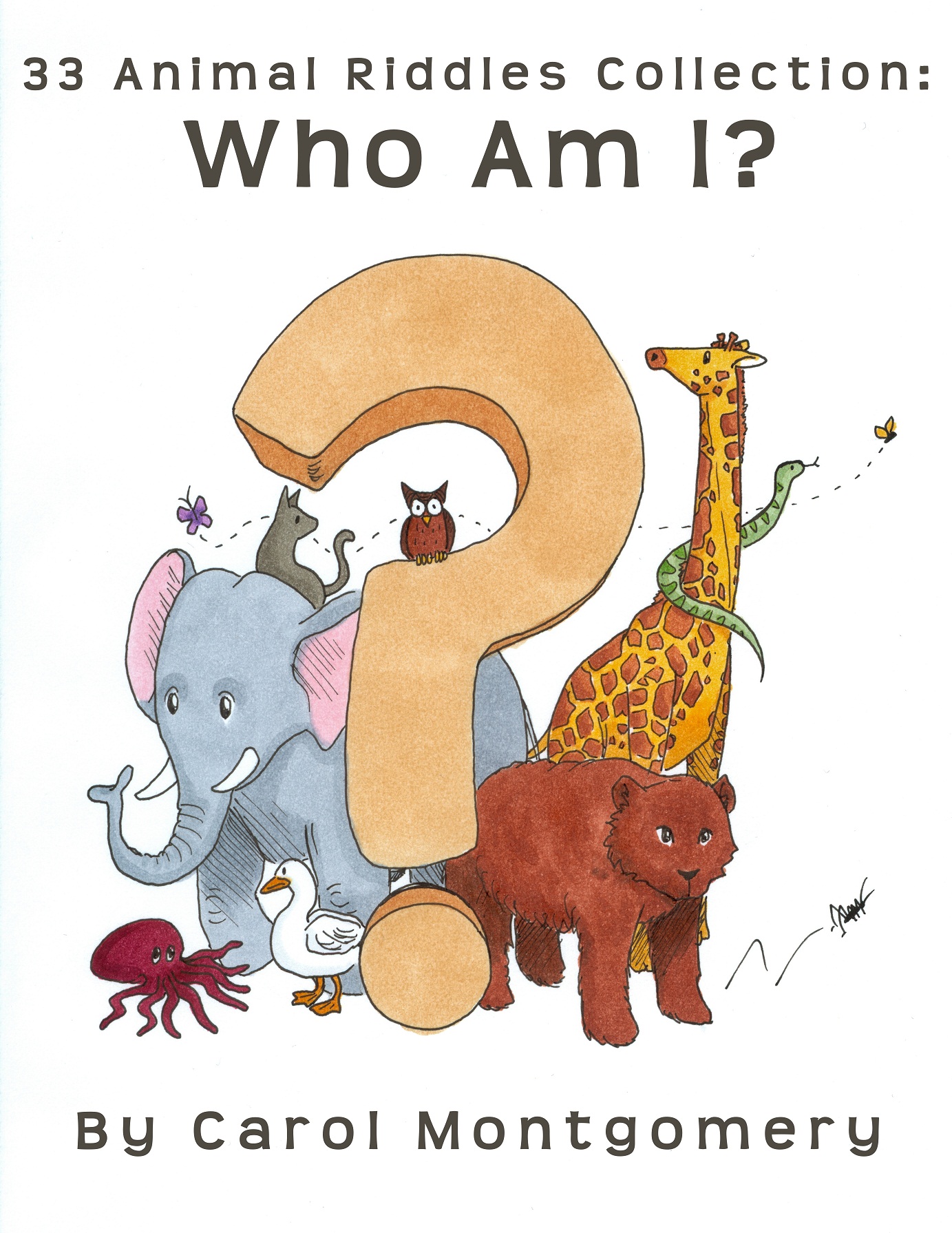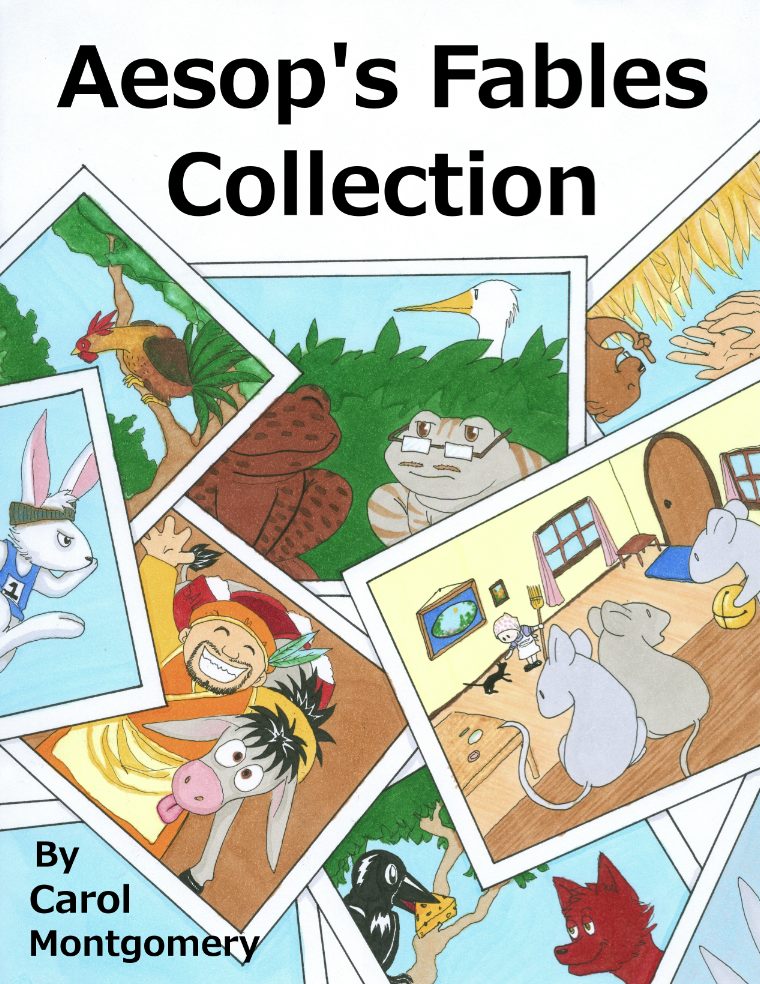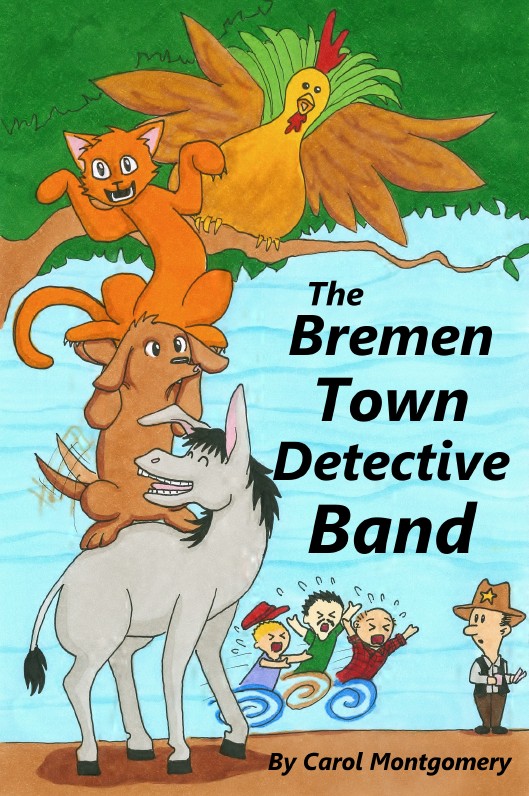publication date: Apr 8, 2020
|
author/source: Carol Montgomery
 A homeschooling mom contacted me by email and asked HOW to implement Readers Theater in a family. The following article is my basic email answer to her questions. (I've added a few extra comments for clarity.)
A homeschooling mom contacted me by email and asked HOW to implement Readers Theater in a family. The following article is my basic email answer to her questions. (I've added a few extra comments for clarity.)
Thanks, Vicki! I understand. Those are excellent questions. I could write a whole book on Readers Theater for homeschoolers, but I'll try to explain the process a little for you.
1. What is Readers Theater?
A basic definition of Readers Theater is two or more people having fun reading aloud. But, of course, it's much more than that. (You previously read about the dramatic benefits of Readers Theater.)
The website [www.ReadersTheaterAllYear.com] is a resource of Readers Theater helpful information (e.g., tips, checklists...) and downloadable PDF scripts (some free and some for paying members only).
Teachers know what they are teaching (e.g., beginning reading skills, elementary reading skills, health, science, history, literature, Bible, character-building...).
Basically, teachers access the site. They use the Free Script page if they are not paying members or use the Script Buffet Club Table if they are paying members. Member teachers must be logged in to see most of the growing collection of scripts.
Teachers choose a category in the Script Buffet Table that appeals to them. They follow the directions and click on a star. Script titles with a short description of the script will appear in each category for grades K-2, 3-5, or 6-8. Scripts may be listed in more than one category. For example, an adventure script may also show a variety of positive character qualities in the characters (e.g., courage, kindness, wisdom).
Teachers choose a script based on their needs. For example, kindergarten or first grade teachers in the Script Buffet Club may choose a script from our Short Vowel section to help build beginning reading skills. Or, teachers of all levels often want to teach children about the tragedy of 9/11, so they choose one of our free 9/11 scripts:
After teachers choose a script title, they click on the title and are taken to the page for that script. On that page they can read an excerpt of the script. If they like the excerpt, they can click the yellow link at the bottom of the page to download the printable PDF with annotated curriculum links for easy lesson plans.
If the teacher still likes the script she can print out as many copies as she needs for her students or use a copy machine to make a copy of the script for each student. (Sometimes students share scripts.) Script pages are usually stapled together or put into folders. For distance learning (or to save paper) some students may use the scripts on phones, tablets, or computers.
No, it's not a booklet. Readers Theater is a skill-building activity that uses PDF scripts–online or printed on paper.
Some teachers choose to build lifelong skills in their students with regular Readers Theater–enjoying it every day or every week. Other teachers only use it for special unit studies or programs.
5. Do they read it aloud?
Yes. Because a Readers Theater script is reread aloud several times students improve fluency, comprehension, and confidence while having fun.
6. Do they do it in a group?
Readers Theater scripts may be practiced alone; however, they work best with buddy reading or in a small group. If there is only one child, a Readers Theater script may still be performed; however, the child will need to change voices for the different character roles. For large groups Readers Theater may be performed chorally or include a chorus.
7. What does it LOOK like?
Teachers choose how to use the scripts with the students. Here are a few ways:
• Introduce vocabulary.
• Read the script aloud chorally as a group.
• Ask for volunteers for the parts.
• Assign parts.
• Practice reading aloud with proper pronunciation, speed, projection, and interpretation.
• Change parts and repeat the process. Eventually, students may add gestures.
Students may practice their parts for 1-4 days and then do a performance for an audience (e.g., stuffed animals, pets, family, friends, relatives, nursing home, assisted living...). Some teachers make videos or podcasts of their students' performances (e.g., for documentation, for memories, to share with others who couldn't attend the performance).
B. Partner Plays or Puppet Plays
• Choose a script for two partners or two choral groups.
• Review vocabulary, if needed.
• Let students take turns reading to each other, changing parts so they practice both parts. They become each other's audience.
• If it's done as a puppet play students may change voices for the puppet voice. For an audience for a puppet play it's best to record the sound ahead of time so the audience can hear better. Students can have the puppets act out their roles.
C. Long-distance Creative Connection
• Send a copy of the script to someone special (e.g., Grandma, Grandpa, cousins, missionaries...)
• Have students practice the script a little on their own (to build fluency and confidence) or do a cold reading with someone special on the phone or on Skype. Some teachers have Skyped Readers Theater plays with classes in different parts of the country or the world. One group presents to the Skype audience and then they switch so the audience becomes the next performers.
• Teachers OR students choose an appropriate script (e.g., from a learning center, notebook, file of collected scripts).
• Assign a "student director" to be the facilitator for rehearsing the script. That student director makes the final decisions. (Rotate student directors.)
• Encourage students to rehearse and perform the script for an audience (e.g., teacher, parents, other students, relatives...). Or, students practice alone and the teacher tweaks the presentation for another performance (e.g., for a program...).
8. How do I implement it in MY family?
As you can see, Readers Theater may be done with a mom and one child, two siblings, a group of siblings, a family celebration, a cottage class of homeschoolers, a homeschool drama club, a free conference call to include readers from other locations, and more. I've even heard of a Readers Theater birthday party!
Homeschooling with Readers Theater can overlap just about any subject, any grade level, any unit study, any holiday, any family devotional time, or any family celebration. Of course, it's more fun with some sort of a performance. But, once students are familiar with Readers Theater they can also WRITE their own scripts.
The scripts are not memorized. It's a theater of the imagination. No props. No sets. Just fun.
The easiest way to implement Readers Theater in a family is to just choose a trustworthy script and try it. There are lots of scripts online, but Readers Theater All Year makes it easy by providing a growing LIBRARY of scripts (e.g., adventures, biographies, health, history, holidays, science, social studies). Even beginning readers will enjoy the scripts written at their level (e.g., short vowel, long vowel...). And, many scripts are character building. Readers Theater easily builds a variety of lifelong skills and can be included in any homeschooling program. It's buried treasure for homeschoolers! What's the next step for you?
A homeschooling mom contacted me by email and asked HOW to implement Readers Theater in a family. The following article is my basic email answer to her questions: 1. What is Readers Theater? 2. How does it work? 3. Is it a booklet? 4. Is it a daily lesson? 5. Do they read it aloud? 6. Do they do it in a group? 7. What does it "LOOK" like? 8. How do I implement it in MY family? (I've added a few comments for clarity.)










.jpg)

